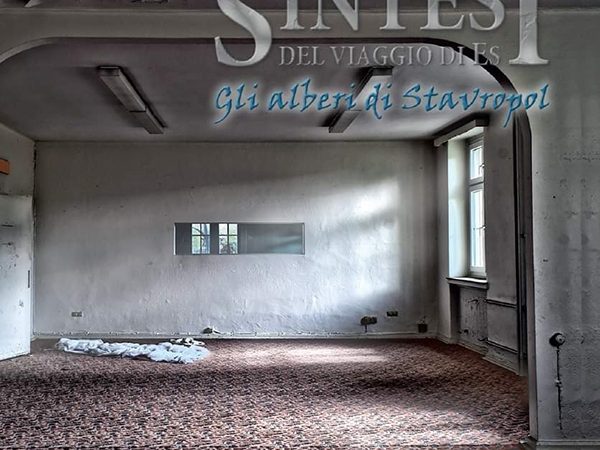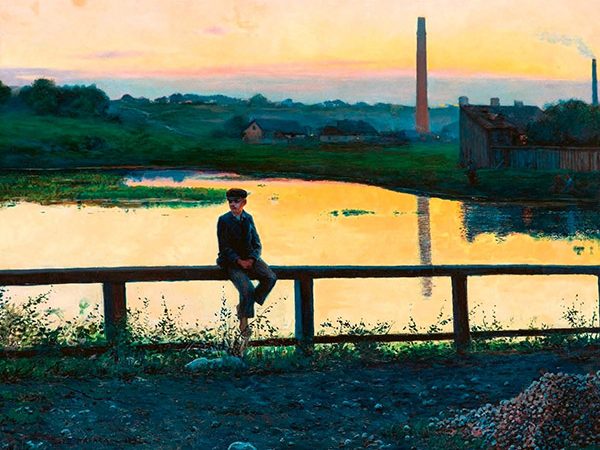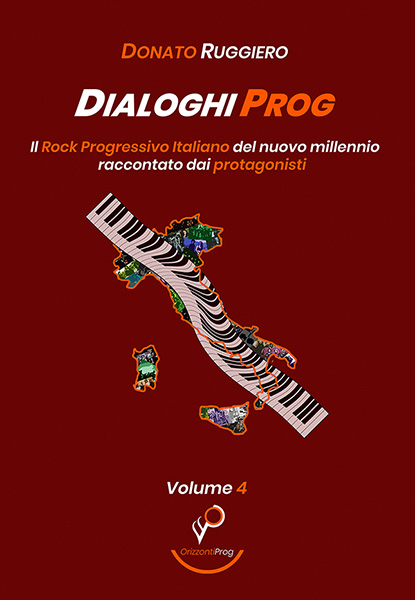Mourning Knight (2021)
Self-production
Mourning Knight is a musical entity created by Jason Brower during the 90s to convey his compositions and poems. After recording many of these creations with the help of a Tascam 8-track, the American artist, over the years, has been tempted several times to give a professional look to all those demos but… There was a “but”. And that “but” was the atmosphere and the mood of that period, immortalised in those “amateur” tapes, impossible to recreate with a new recording.
Recently, however, something intervened to change his mind and, in 2021, Brower published Mourning Knight. What’s on the album? Tracks from that period, enhanced in Pro Tools through the addition of Mellotron strings and choir, but still as close to the originals as possible. Jason Brower (drums, percussion, keyboards, bass guitar, vocals) also involved Norm Dodge (electric and acoustic guitar, bass guitar) and Alisa Amor (harmony vocal on Seance on a Wet Afternoon).
Going beyond the technical-sentimental data, when listening to Mourning Knight, it appears as a “little story” of international progressive rock (and not only), well customized, full of influences (especially seventies) but with a recognizable personal touch. And while passion and drama flow mainly through the polychromatic sounds (but there are also many delicate moments), the darker and more melancholic side of life finds space in the words. And the lyrics are indeed poems, very particular and fascinating (just go to the Bandcamp page to feel the quality).
And also the artwork chosen for the cover, the painting “Vanitas” by Adriaen van Utrecht, somehow encloses the “encyclopaedic” essence of the work, in that profusion of details painted by the Flemish artist in his still life: flowers, coins, glass containers, a book, a skull and many other small elements that, like perfect pieces, fit together creating a homogeneous and harmonious work.
The only flaw in the work, unfortunately, is the poor audio quality. But as I said before, it’s a choice.
Seance on a Wet Afternoon. The opening track welcomes us warmly, with a fine warp of keyboards (sometimes Oldfieldish) and guitars, before Dodge’s Brian May-like solo takes over the scene. With Brower’s vocals, and thanks also to the distortions, we enter Areknamés territory. What follows is an emotional ups and downs, with very Italian seventies touches, led by the organ, and bright openings. But there are also flashes of Beatles and Eagles in the first long part of Seance on a Wet Afternoon, before moving to a very suggestive and well-thought-out Floydian front. And the break at 6.40 minutes is typically Italian (see Banco). Great moment. Then the threads of the song are knotted again, before an evocative fragment, made so especially by the ethereal vocalism of Alisa Amor. And the last minutes of the first chapter of Mourning Knight flow brilliantly.
Very delicate, at times poignant, Playing the Fool with that very intense essence that moves between Alan Parsons Project, Pink Floyd and David Bowie. The piano, drums and guitars are very well intertwined. […] You play the fool to empty aisles and to your knees you fall. / Soliloquies fill the shadows in the silent hall. / You use the masks to wear your smiles when tragedy befalls / bowing through the curtain to ghosts of old applause. / You bask in light of yesterday on the threshold of your disarray / as you fall through the arms of your departed. / You held the world within your hand, once a giant of the land / but now you’re cold and your skin hangs in the closet […].
The start of Blood of Martyrs is really chilly, almost Lynyrd Skynyrd-like. Then the “picture” starts to change until a dark, Goblinish break. Then we sail on Canterbury-like shores. But it’s a chameleonic track, living of sudden changes of path, between darkness and light, tension and relief, with 100% prog breaks that move between The Trip and King Crimson. Amazing. A surprising track.
Very soft, romantic, The Blindman’s Window, with light “carpets” of strings enveloping Brower’s intense singing. Then, gradually, layers and layers are added until reaching a fast, rockin’ rhythm (with hints of Genesis “in the air”). Then it’s time for some bright guitar solos, before the “restart”. There’s nothing left to see.
Inside This Wonderland also starts out full of sweet harmony (and a pinch of Floydian essence), with some chirping birds, then it develops, always keeping its feet firmly on “uneven” ground, but well characterized in its symphonic nature. The vocal layering that develops around 4 minutes is evocative and introduces a new “intimate” moment, a voice/keyboard dialogue that grows with the help of the bass and other keys until it explodes. And the song begins again, calm, but with a different mood, slightly more painful. Everything is intense and advances smoothly, with almost palpable emotional peaks guided by the keyboards, a bit Malibran, until the dense finale. Miracles are for believers, illusions for deceivers.
A long wait. Well repaid.










Leave a Reply